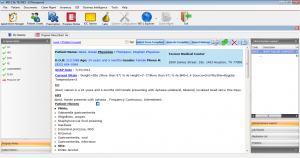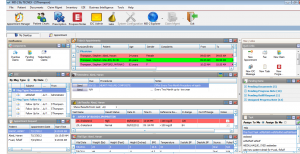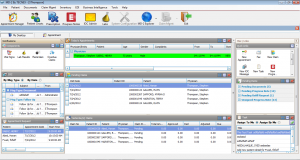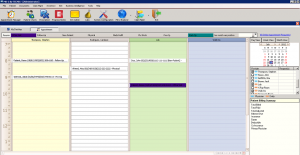Medical
TECNEX Offers a Fresh Perspective on Medical Software

Low-cost and easy-to-use, TECNEX EMR and practice management solutions offer small clinics a unified platform for finance and clinical data management. We recently sat down with founder Moiz Ahmed, who spoke about the importance of innovation in medical software, the challenges of EHR adoption, and the advantages of being a relative newcomer to the medical software arena.
You can learn more by visiting the TECNEX website.
How was TECNEX founded and what is the company’s mission?
TECNEX was founded by me in 2000. My main reason for staring the company was to provide high-quality, low-cost healthcare technology with a lot of innovation. Before founding the company I looked at the systems that were already in the market. My wife is a physician, and the department head of hospital she was working in wanted me put together a small system for them—I’m a software engineer by profession, with about 20 years of experience. So I just took about two weeks and put something together, and they couldn’t stop thanking me for it. I couldn’t figure out why they were so thankful because I really didn’t do anything. I just put something together in two weeks. They asked me if I wanted money. I said, “No, I didn’t put any effort into it.”
So I decided to dig deeper, and I asked one of the doctors there to tell me what they were actually using for their system. They were using something that you could call 1970s interface technology. It was quite amazing to me that it was 2006 and their healthcare technology interface was so far behind. It’s no wonder why physicians don’t really want to get over to computers and make their systems or data electronic. So I started thinking of actually creating something that would be more innovative, and TECNEX was founded.
What does TECNEX do differently, and how do you stand out from the industry noise?
There are a couple things that we do differently. For one, our technology is the latest. Our system is very advanced. We have a 100 percent satisfied customer base. We haven’t lost even a single customer since the time we started selling in 2007. The other thing we do is currently we are one of very few companies that provide all-in-one physician-to-physician solutions. We have a technological platform that is patent-pending that actually gives the physician everything from finance management up to clinical data management. There are other companies that are providing such services, but they don’t do so on one technological platform. And by finance management, it’s a complete revenue cycle, along with government-certified electronic health records management software.
What are the primary benefits that users of TECNEX EMR and PM software can expect?
Our software offers a lot of the things that you won’t find in the healthcare industry. Most importantly, it’s extremely easy to use and it gives you the full power of a high-end system at a low cost. A traditional software implementation can cost a clinic $60,000 to $80,000 over the space of two years. That’s quite a bit of money for a single-physician clinic. So our users can expect a very low-cost system with a very high-quality user interface. Our software is very innovative, bringing all the features of a high-end system, but based on the latest technology, not technology that is 10, 12 or 15 years old.
Where do you see the EMR segment heading in the next five years? How do you see TECNEX fitting into that landscape?
As far as the industry’s concerned, you’ve got companies that have been in the market for 15 to 20 years. But what I see is—yeah, they’ve been in the market for that long, they’ve got that kind of experience and they’re on strong financial footing as well, but at the same time their product is 15 to 20 years old. And the technology it’s based on is that much older as well. It’s very difficult for a company to redo the entire technology of its flagship offering.
What TECNEX is doing is we started off with an integrated technology to make sure that once the system goes out in the market we can fill that gap and ensure that we have the technology with the latest design and navigation features, and concepts and techniques in the industry. And we keep upgrading those with every release.
I think at this point because of the government regulations, which are a good thing, the industry (by industry, I mean the healthcare industry—physicians, nurses, the healthcare business executives) has started embracing the technology. Every industry that went through this kind of transition from paper-based information management to electronic information management met some kind of resistance. The healthcare industry itself has to realize that it’s time they move into the next era of information management. That’s what needs to happen. How TECNEX is dealing with that is we have been creating processes right from the very first day that will help our customers transition into electronic systems for their clinic with very little effort.
What are some of the challenges that you face, and what do you do to overcome them?
The biggest challenge that we have face is the stereotype that physicians are not happy with the EHR, practice management and revenue cycle technology that’s available. The industry is not happy with it. Once we started out, we were taken in the same spirit so to speak. We were told by practices that they don’t want to implement an EMR.
In the early days of TECNEX I was selling the software myself. I recall going into a physician’s office and not even being able to sell the system for free. Not because the system wasn’t good, but because people just didn’t really want a new system in the clinic. I talked to a physician and said, “You know after 2015, you’ll have penalties if you don’t have an electronic system in your clinic.” He said, “Yeah. By 2015, I’m going to close down my practice.” This is the kind of resistance that we felt.
But over time, people have started using our system. We are in 10 states right now. All of those customers speak highly of our system. So the word is spreading and people are realizing that our system does not fit the stereotypes of other systems that people have used.
Another thing that is very important, regardless of the type of software we’re talking about, is the stability of a software system. That’s one of the biggest challenges for any software company. One of the things that I focused on early with this company was to ensure that our engineering processes are strong, and that they relate seamlessly to the business processes. That ensures that our product is stable and is released with a minimal amount of issues. The stability is almost 99 percent each time we turn out a release.
Could you tell me a bit about the new clinic services and first-time EMR buyer services you offer?
As far as the new clinic and first-time EMR buyer–those are the services we perform for physicians who are new or have just opened up their own clinic. That’s something that no other EMR companies do. What we do is we make sure we have a full package for new physicians or physicians that are opening up new clinics or who have just come out of their group practices. We give them a full package at a very affordable cost that manages not just their computer systems, but also their revenue cycle.
We also offer these services to charity clinics. I know that people who go to charity clinics often don’t have enough money to pay for their healthcare services, so I decided that we would do our part and give out our system for free or at very low cost to charity and community clinics. Even today, we get called and we just give away our software—at very low cost if they can afford it.
What are some of the exciting things happening with TECNEX right now?
We have moved into new offices about three times in the past year. We’ve been growing very fast. That’s because of the trust that our customers have put into us after looking at our services and our technology. We have been hiring left and right due to steady and stable revenue and finances. We have launched three products in the past one year. Besides our flagship product and services, we have added revenue cycle management services. It’s growing really fast.
We’re also working on another technology that will help our physicians and customers communicate patient data with each other in a secure environment. That’s something that you probably won’t find in a lot of other places.
That’s all the questions I have. Is there anything else you’d like to add?
I think there’s a lot to be done in this segment. Industry standardization in data formats is very important for the healthcare industry at this point. We are moving quickly to a time when the senior generation of physicians is leaving, and the new generation of physicians—those who were born with laptops, tablets and iPhones—is coming in.
There’s a need to ensure a standardization of data elements because sharing patient information in a secure environment is becoming a necessity. I think it’s important that data synchronization is kept in mind. It’s a huge task. It’s not small. There are 250-plus EMR companies in the market. Bringing all of them on the same footing while they are competing with each other is not going to be easy, though there are organizations that are trying to do that. The government itself, the Department of Health and Human Services, and the coordinator for healthcare IT have done a very good job. But there’s still some work to be done.
Want to read more Business-Software.com exclusive interviews with CEOs and company founders? Head over to the Behind the Software Q&A section of the blog to browse the complete collection.










